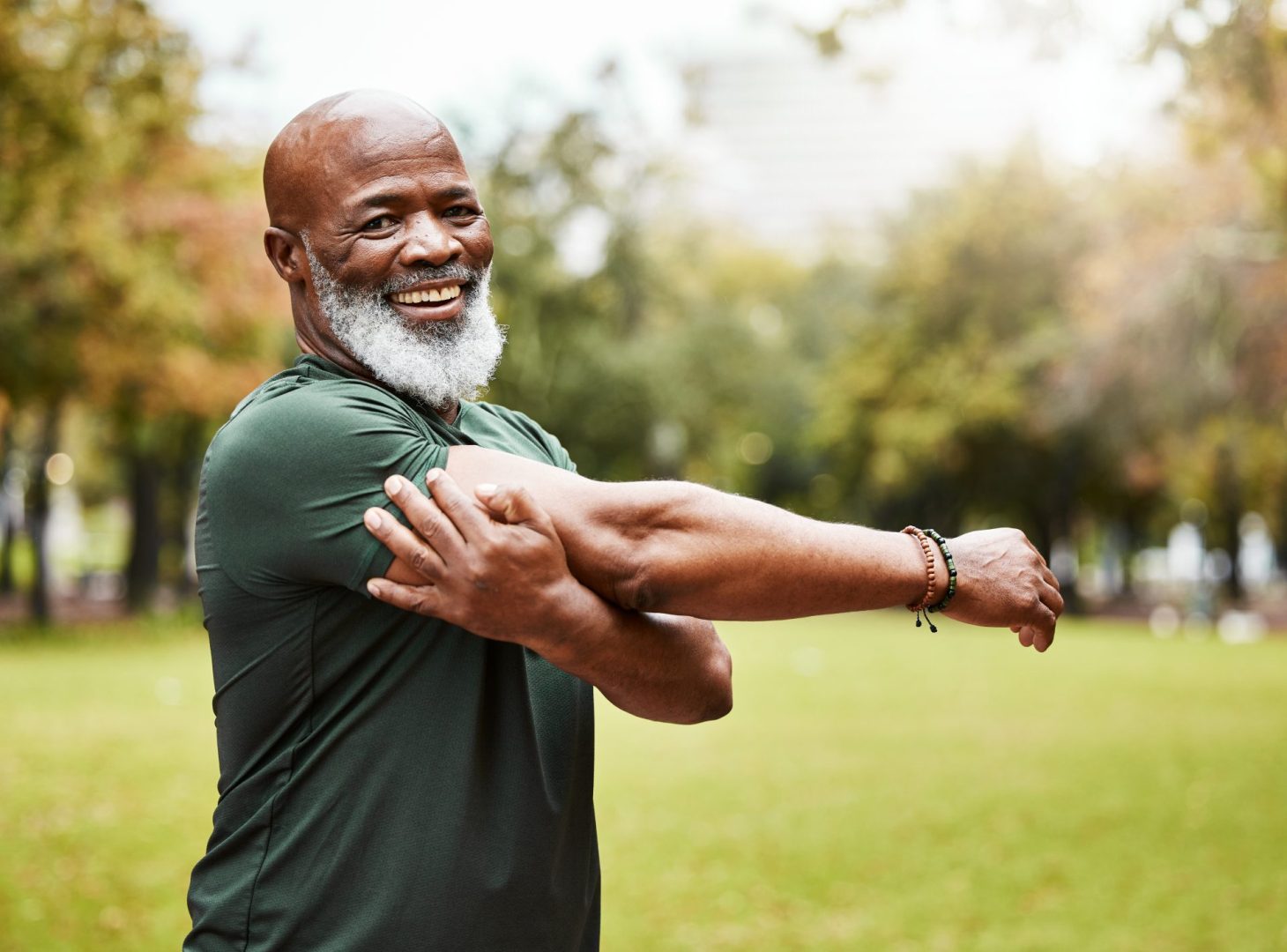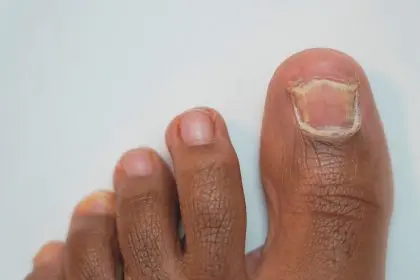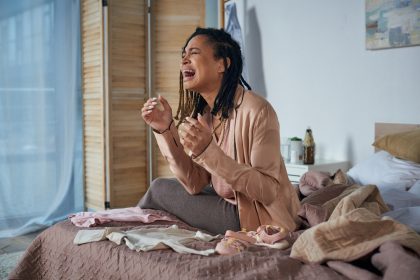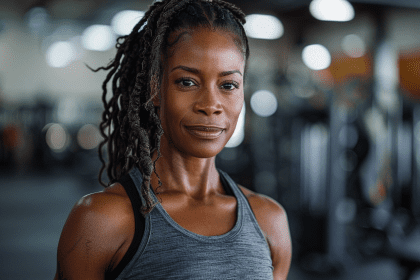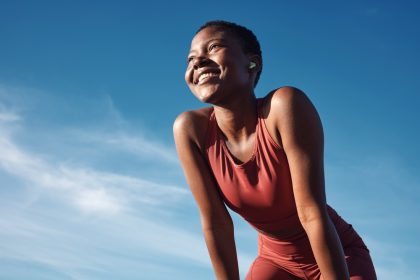What you’re doing in the gym and everyday life could be accelerating the aging process without your awareness.
The invisible forces accelerating your body’s aging
The way we move through the world impacts our bodies far more profoundly than most people realize. While nutrition and skincare routinely dominate anti-aging discussions, movement patterns often exert equal or greater influence on how quickly our bodies develop the hallmarks of aging. These patterns silently shape our physical structure over time, either preserving youthful function or accelerating deterioration.
Movement habits become particularly influential because they operate through repeated microtraumas rather than obvious injuries. A single repetition of a problematic movement typically causes no noticeable harm, creating a false sense of safety. However, when repeated hundreds or thousands of times weekly over decades, these seemingly innocent movements reshape tissues, alter joint mechanics, and reprogram nervous system function in ways that manifest as premature aging.
The body’s remarkable adaptability works both for and against us in this context. While it allows us to accommodate suboptimal movement patterns without immediate consequences, this same adaptability means tissues gradually remodel themselves around these patterns. The resulting changes – shortened muscles, compressed joints, altered movement sequencing – eventually manifest as the stiffness, discomfort, and limited mobility commonly attributed to “normal aging.”
1. Forward head posture during smartphone use
The human head weighs approximately 10-12 pounds when properly aligned over the spine. However, as the head moves forward from its optimal position – as commonly occurs during smartphone use – the effective weight experienced by the neck structures increases dramatically. At just 15 degrees of forward head position, the effective load more than doubles, while 60 degrees of forward tilt creates forces equivalent to carrying 60 pounds on the cervical spine.
This forward head position creates cascading effects throughout the body. The upper back muscles chronically overwork attempting to counterbalance the forward head weight, leading to the rounded upper back posture increasingly common even among younger adults. The chest muscles adaptively shorten, pulling shoulders forward and downward into the characteristic hunched position once seen primarily in the elderly.
The consequences extend beyond appearance. This posture chronically compresses the anterior portions of the cervical vertebrae while overstretching the posterior elements. Over time, this uneven pressure accelerates cervical disc degeneration, narrows nerve passageways, and creates the painful arthritis many consider inevitable with aging. The altered neck alignment also affects blood flow to the brain, potentially contributing to headaches, concentration difficulties, and even long-term cognitive changes.
The jaw joint suffers similarly, as forward head positioning shifts its mechanical relationship and often leads to painful temporomandibular joint dysfunction. The resulting chronic tension patterns frequently radiate into the face, contributing to the development of deep facial lines that age appearance prematurely.
2. Seated spinal slumping during extended sitting
The typical seated posture – pelvis tucked under, lower back rounded, upper back hunched – creates one of modern life’s most aging movement patterns. Unlike standing, where muscle activity naturally maintains some spinal curvature, seated slumping places the spine’s supportive structures under sustained passive pressure for hours daily.
This position reverses the spine’s natural lumbar curve, increasing pressure on intervertebral discs by up to 40% compared to proper seated alignment. The discs, designed to distribute forces evenly throughout the spine, instead experience concentrated pressure on their posterior portions. This uneven loading accelerates the disc degeneration and height loss that contributes to the shortened stature characteristic of aging.
The slumped position also overstretches the posterior spinal ligaments while allowing the core stabilizing muscles to deactivate. Over time, this combination creates the paradoxical situation where back muscles simultaneously weaken and tighten – a hallmark of age-related back problems. The weakened muscles provide inadequate support during movement, while their chronic shortening limits range of motion.
Perhaps most significantly, prolonged slumping alters the nervous system’s postural programming. The brain gradually accepts this position as normal, making proper alignment feel increasingly foreign and difficult to maintain. This neurological reprogramming explains why many older adults struggle to straighten fully, even when consciously attempting to improve posture.
3. Improper bending and lifting mechanics
The way people typically bend to pick up objects – rounding the spine forward while keeping the legs relatively straight – creates one of the most damaging movement patterns for long-term joint health. This movement concentrates force on the spine’s passive structures rather than utilizing the powerful leg muscles designed for lifting.
Each improper bend places tremendous shear force on the spinal discs, particularly at the vulnerable lumbar-sacral junction. While a single instance rarely causes immediate damage, the cumulative effect of thousands of improper bends accelerates disc degeneration, facet joint arthritis, and ligament strain. These accumulated microtraumas eventually manifest as the chronic back pain affecting over 80% of adults at some point in their lives.
The improper bending pattern also reinforces problematic movement sequencing in the nervous system. The brain learns to initiate movement from the upper body rather than the hip joints, establishing movement habits that carry over into other activities. This faulty sequencing creates inefficient movement patterns throughout daily life, increasing energy expenditure while accelerating joint degradation.
The consequences extend beyond the spine itself. As back problems develop, compensatory movements emerge elsewhere in the body. The knees often hyperextend to accommodate limited hip mobility, while the shoulders hunch forward to counterbalance backward weight shifts. These compensations create the characteristic movement pattern that visibly signals advancing age long before other signs appear.
4. Repetitive high-impact exercise without recovery
While appropriate physical activity preserves youthfulness, certain exercise patterns accelerate aging processes, particularly when performed with inadequate recovery. Repetitive high-impact movements – such as running on concrete surfaces, plyometric exercises on hard floors, or high-impact aerobics classes – create substantial compressive and shear forces through the joints with each impact.
These forces, when accumulated without sufficient recovery time, gradually overwhelm the body’s repair capabilities. Cartilage, which has limited regenerative capacity, begins wearing away faster than it can be maintained. The underlying bone responds by hardening and developing osteophytes (bone spurs), creating the painful joint changes commonly attributed to age rather than movement patterns.
The connective tissues supporting joints also suffer from repetitive unrecovered impact. Ligaments and tendons, which receive relatively limited blood supply compared to muscles, require substantial recovery time between challenging sessions. Without this recovery, microdamage accumulates faster than repair processes can address it, leading to the thickened, less elastic connective tissues characteristic of aging.
The metabolic effects of chronic overtraining further accelerate aging processes. Excessive high-intensity exercise without recovery elevates inflammatory markers and stress hormones while suppressing regenerative hormonal processes. This internal environment accelerates cellular aging throughout the body, affecting everything from immune function to skin elasticity.
5. Unconscious jaw clenching and teeth grinding
The jaw’s temporomandibular joint ranks among the most frequently used in the human body, activating during speaking, eating, swallowing and expressing emotions. Additional unconscious clenching or grinding – particularly common during stress, concentration, or sleep – creates extraordinary cumulative pressure through these complex joints.
This habitual overactivation accelerates degenerative changes in the joint structures, frequently leading to the painful clicking, popping, and restricted movement many consider inevitable aspects of aging. The articular disc separating the joint surfaces gradually deforms under constant pressure, while the surrounding ligaments lose elasticity from perpetual tension.
Beyond the joint itself, chronic jaw tension creates aging effects that radiate throughout the face and neck. The masseter and temporalis muscles hypertrophy from constant activation, creating a squared jawline often associated with aging, particularly in women. The persistent tension patterns establish deep facial lines that become increasingly prominent around the mouth and between the brows.
The ripple effects extend further still. Jaw tension typically accompanies neck muscle hypertension, which restricts blood flow to the head and face. This chronically reduced circulation accelerates skin aging while contributing to tension headaches. The accompanying shallow breathing patterns limit oxygen delivery throughout the body, further promoting cellular aging processes.
Why these movements age us: The science of premature deterioration
At the cellular level, problematic movement patterns accelerate aging through several key mechanisms. Mechanical stress from repetitive poor movements triggers inflammatory responses in affected tissues. While acute inflammation supports healing, the chronic low-grade inflammation from ongoing movement stress promotes degradative enzyme activity that breaks down collagen and elastin – the proteins responsible for tissue resilience and elasticity.
Compromised circulation from suboptimal postures and movement patterns restricts nutrient delivery and waste removal from tissues. Cartilage, discs, and other structures with limited direct blood supply particularly suffer from this effect, as they rely on movement-driven fluid exchange for nourishment. Without proper movement, these tissues essentially starve while simultaneously bathing in their own metabolic waste products.
Neurological adaptations to poor movement patterns create perhaps the most insidious aging effect. The nervous system gradually normalizes dysfunctional movements through a process called long-term potentiation, making counterproductive patterns increasingly automatic while optimal movements require greater conscious effort. This neurological reinforcement explains why movement quality typically declines with age unless specifically addressed.
Hormonal factors also connect problematic movements with accelerated aging. Poor posture and movement patterns increase cortisol production while decreasing growth hormone and testosterone – creating a hormonal environment that accelerates tissue breakdown while impairing repair processes. This hormonal shift affects not just the musculoskeletal system but promotes cellular aging throughout the entire body.
The 5 youth-preserving movement alternatives
- Neck retraction and thoracic extension practices
Rather than allowing the head to drift forward during device use, practicing regular neck retraction movements helps counteract this aging pattern. This gentle movement – drawing the head directly backward while keeping the gaze level – reestablishes proper cervical alignment while strengthening the deep neck flexors that weaken with forward head posture.
Complementing this with thoracic extension movements counteracts the rounded upper back position that typically accompanies forward head posture. Simple practices like draping backward over a foam roller placed horizontally across the upper back help restore mobility to thoracic vertebrae while stretching the chronically shortened chest muscles.
Implementing environmental modifications further supports these movement corrections. Raising screens to eye level eliminates the need to look downward, while scheduling regular movement breaks prevents tissues from adapting to sustained positions. These simple interventions, when practiced consistently, can reverse years of posture-related aging changes while preventing future deterioration.
- Pelvis positioning and microbreak movements during sitting
Maintaining proper pelvic positioning transforms sitting from an aging activity into a neutral one. Sitting with the pelvis slightly forward rather than tucked under preserves the spine’s natural lumbar curve, distributing pressure evenly through the vertebral structures rather than concentrating it on vulnerable posterior elements.
Implementing microbreak movements during prolonged sitting prevents tissues from adapting to static positions. Simple practices like pelvic tilts, gentle spinal rotations, and periodic standing breaks maintain circulation while reminding the nervous system of movement possibilities beyond the seated position. These brief movements, practiced consistently throughout the day, prevent the cumulative tissue changes that manifest as premature aging.
Using appropriate supports further protects against sitting-related aging. A small lumbar support maintains lower back curvature, while properly adjusted armrests prevent shoulder hunching. These environmental modifications work with the body’s natural structure rather than against it, preserving youthful movement potential despite modern life’s sitting demands.
- Hip-hinge movement patterning
Learning proper hip-hinge movement transforms everyday bending and lifting from aging activities into rejuvenating ones. This movement pattern – initiating forward bending from the hip joints while maintaining a neutral spine – protects spinal structures while activating the powerful gluteal and hamstring muscles designed for generating lifting force.
Regular practice of hip-hinge movements without weight helps reprogram the nervous system’s movement sequencing. Simple exercises like wall-facing hip hinges provide sensory feedback that helps distinguish between hip and spine movement, reestablishing proper movement patterns that may have been lost through years of improper bending.
Applying this pattern throughout daily activities compounds its anti-aging benefits. Using a hip-hinge for everyday actions like loading a dishwasher, picking up laundry, or gardening transforms routine tasks into opportunities for movement quality improvement. This consistent reinforcement gradually rewires the brain’s movement programming, making youthful movement patterns increasingly automatic.
- Surface variety and recovery rhythms
Introducing surface variety into exercise routines dramatically reduces the aging effects of repetitive impact. Alternating between natural surfaces (grass, dirt trails, sand) and man-made surfaces (concrete, asphalt, gym floors) creates constantly varying impact forces that prevent overadaptation of any single tissue structure. This variability trains the body’s adaptive capabilities rather than overwhelming them with identical stresses.
Implementing deliberate recovery rhythms transforms exercise from potentially aging to definitively rejuvenating. Alternating high-impact days with low-impact activities allows affected tissues to complete repair processes before encountering new stress. This rhythmic approach supports tissue regeneration while preventing the accumulated microdamage that accelerates joint aging.
Incorporating movement varieties that challenge different tissue structures further distributes exercise stress. Complementing impact activities with swimming, cycling, or resistance training creates comprehensive conditioning while preventing overuse of specific movement patterns. This balanced approach preserves joint surfaces while maintaining the diverse movement capabilities characteristic of youthful bodies.
- Jaw relaxation practices and nocturnal protection
Implementing regular jaw relaxation practices counteracts the aging effects of chronic tension patterns. Simple awareness techniques – like periodically checking for space between upper and lower teeth throughout the day – interrupt unconscious clenching patterns before they create cumulative damage. This mindfulness practice gradually reprograms the nervous system’s default jaw position from clenched to slightly relaxed.
For persistent nighttime grinding, dental appliances provide protection against accelerated aging. Custom-fitted night guards distribute pressure evenly across the dental arches while creating space between the teeth that allows jaw muscles to relax. These devices prevent the joint compression that leads to premature deterioration of TMJ structures.
Addressing underlying stress patterns further reduces age-accelerating jaw tension. Implementing brief relaxation practices during transitions between activities helps reset baseline tension levels. This proactive stress management prevents the unconscious jaw clenching that typically accompanies concentration, preventing its cumulative aging effects on facial structures.
How to reverse movement-related aging
The body maintains remarkable regenerative capacity throughout life when given appropriate movement stimulus. Implementing targeted mobility practices – focusing specifically on areas that typically tighten with age – can restore significant movement quality even after decades of limitation. Regular gentle exploration of these movements reminds tissues of their full potential range, gradually restoring capabilities that may have seemed permanently lost.
Strengthening traditionally underused movement patterns complements mobility work in reversing movement aging. Many aging-related limitations stem not from genuine structural changes but from neurological inhibition of certain movements. Carefully strengthening these patterns reassures the nervous system of their safety, gradually reducing protective limitations that may have been mistaken for irreversible aging.
Skilled bodywork interventions can accelerate this reversal process by addressing tissue restrictions that impede proper movement. Techniques that restore fascial gliding, normalize muscle tone, and decompress joint structures create physiological conditions that support movement quality improvement. These interventions effectively reset the physical environment, allowing more productive movement patterns to emerge.
Perhaps most importantly, cultivating body awareness provides the foundation for all other aging-reversal strategies. Regular practices that enhance proprioception – the sense of body position and movement – help identify problematic patterns before they create permanent changes. This heightened awareness transforms daily activities into opportunities for movement quality improvement, gradually upgrading habitual patterns from aging-accelerating to youth-preserving.
The long-term benefits of movement pattern awareness
Cultivating awareness of movement patterns offers profound aging-preventive benefits extending far beyond simple joint preservation. Mindful movement significantly improves balance and coordination – capabilities that typically decline with age primarily due to disuse rather than inevitable degeneration. Regular practice of varied, attentive movement preserves these neural pathways, preventing the falls and injuries that often accelerate aging cascades.
Energy efficiency represents another significant benefit of optimal movement patterns. Bodies moving in biomechanically appropriate ways require substantially less energy for daily activities, creating a subjective experience of youthful vitality. This efficiency prevents the activity avoidance that often initiates declining mobility cycles in older adults.
Psychological benefits accompany these physical improvements, as movement capability directly influences mood and cognitive function. Maintaining diverse, confident movement patterns supports dopamine and serotonin production while enhancing brain-derived neurotrophic factor levels that support cognitive health. These neurochemical effects help maintain the optimistic outlook and cognitive sharpness typically associated with youth.
Perhaps most significantly, conscious movement patterns enhance overall body awareness, allowing earlier detection of potential health concerns. This heightened somatic awareness often leads to proactive health measures rather than reactive ones, preventing minor issues from developing into the chronic conditions commonly attributed to aging.
The most profound anti-aging benefit may be the preservation of movement freedom itself. Bodies allowed to move through their full natural ranges maintain that capability remarkably well with age. By identifying and addressing problematic movement patterns before they create permanent limitations, individuals can maintain the movement freedom typically associated with youth far longer than conventional expectations suggest is possible.

